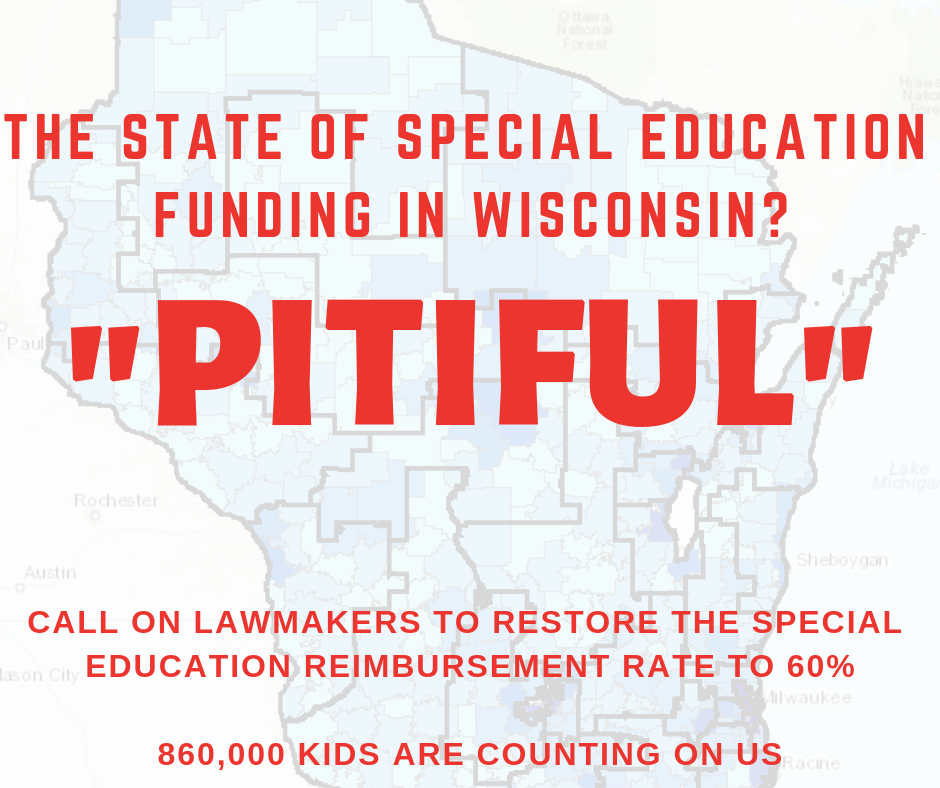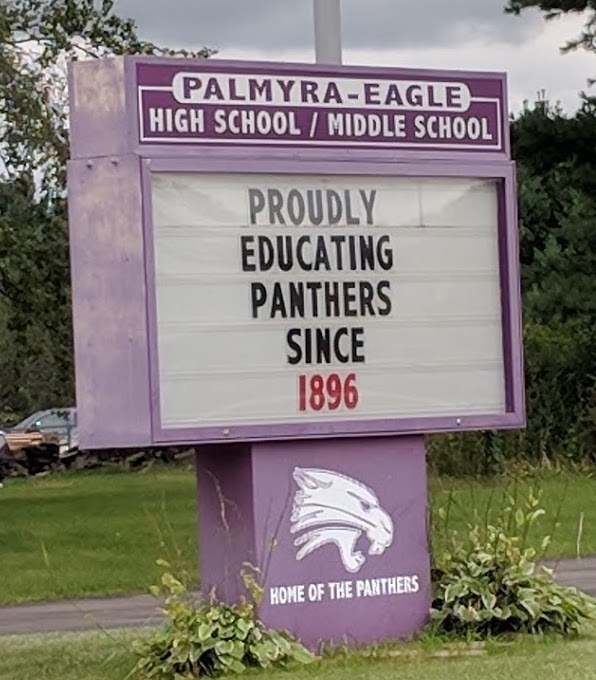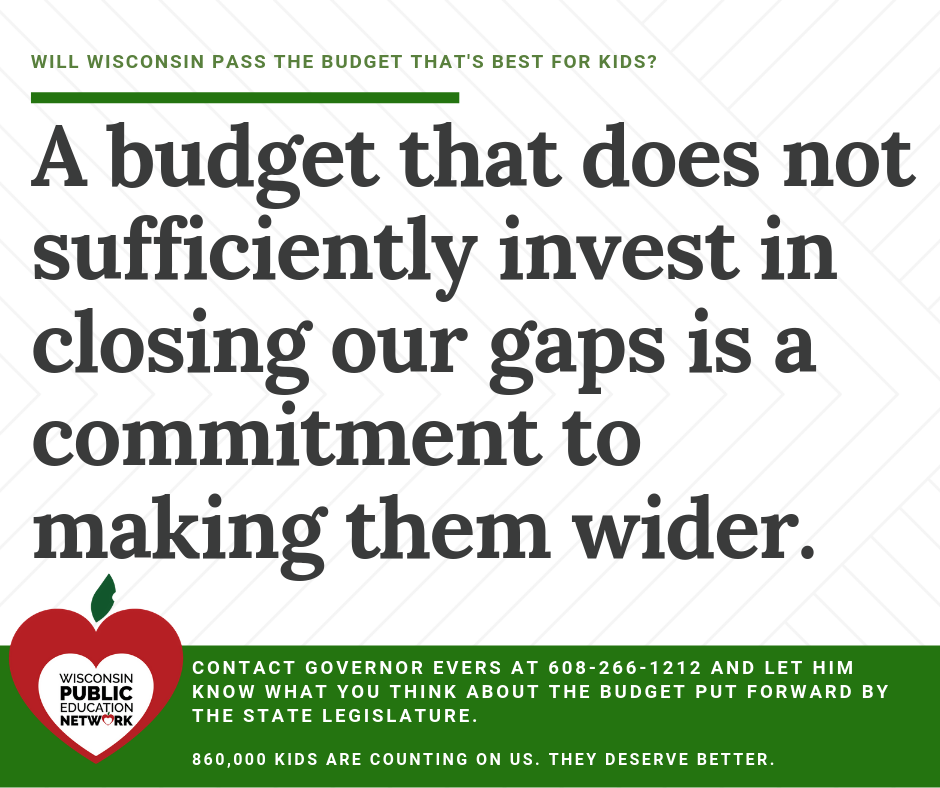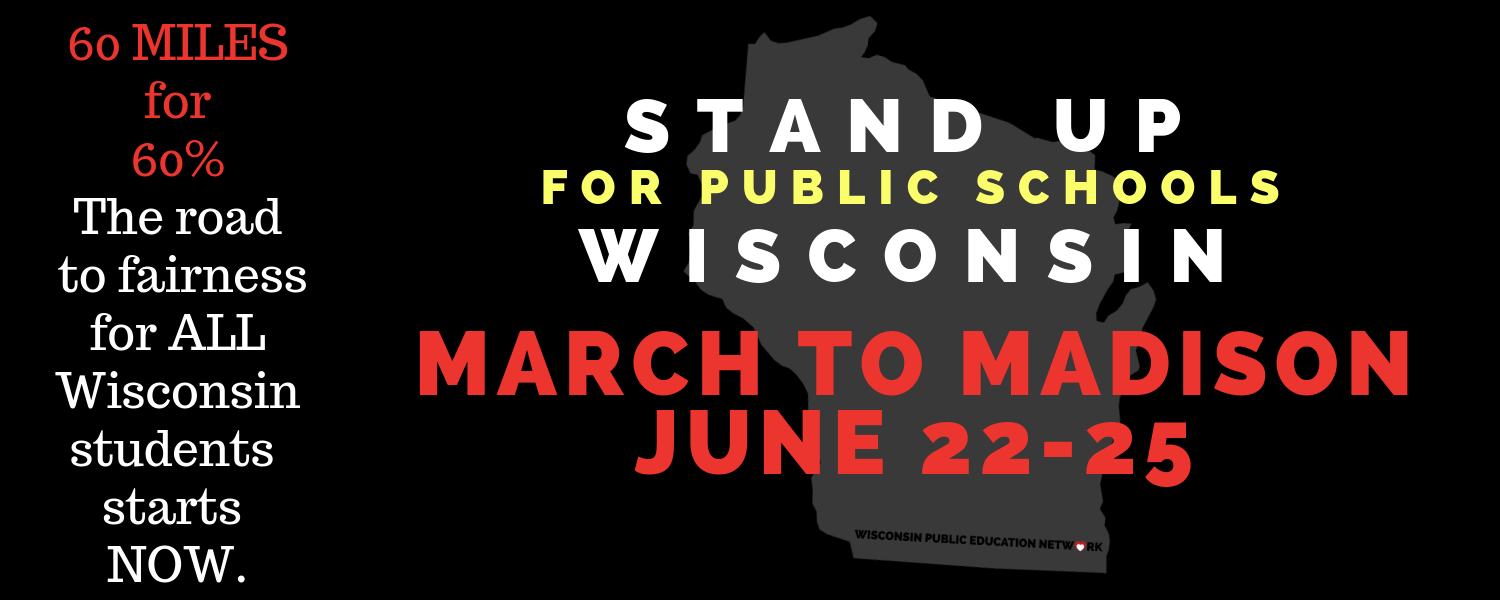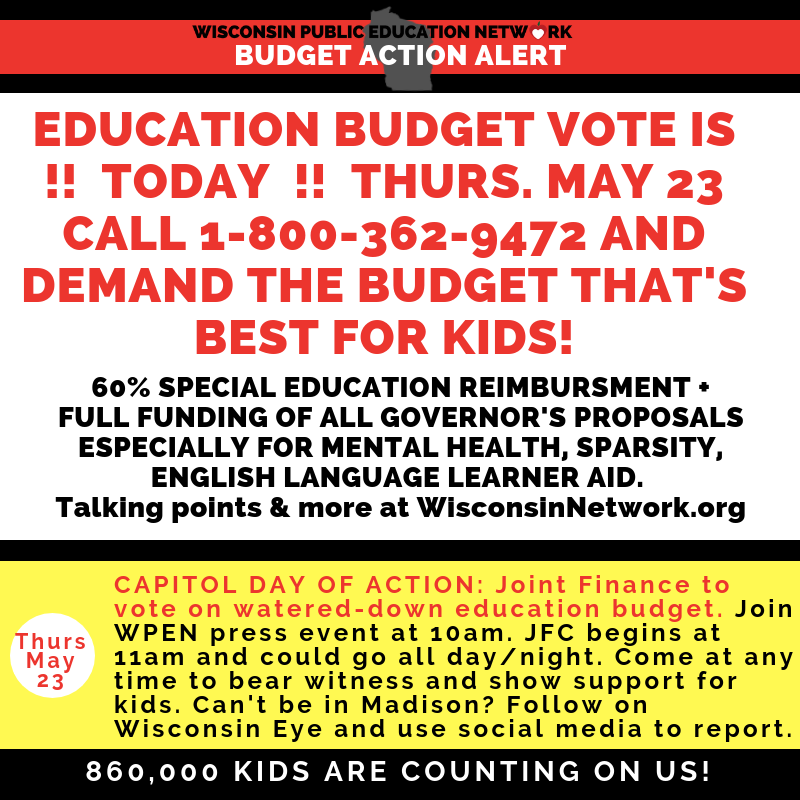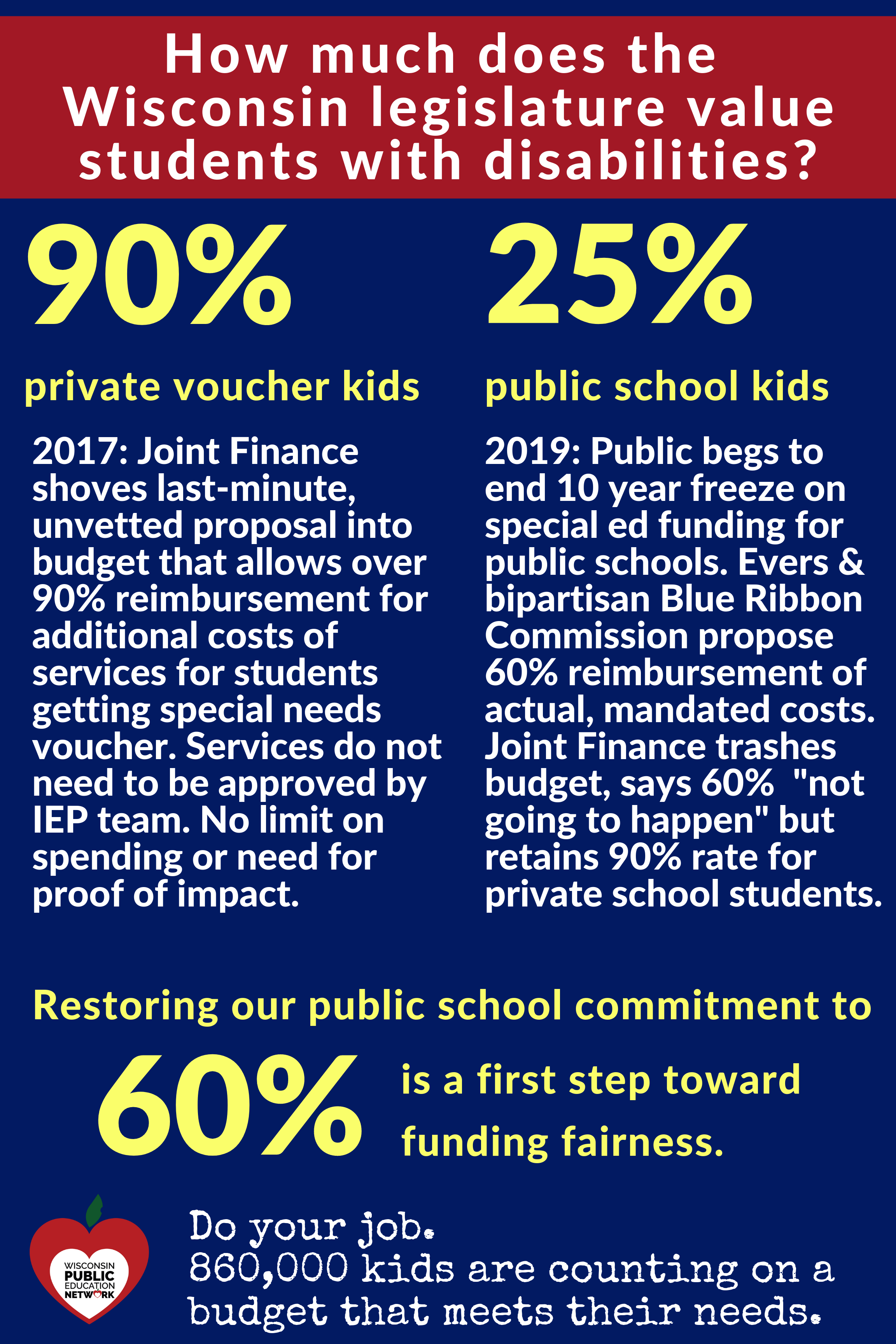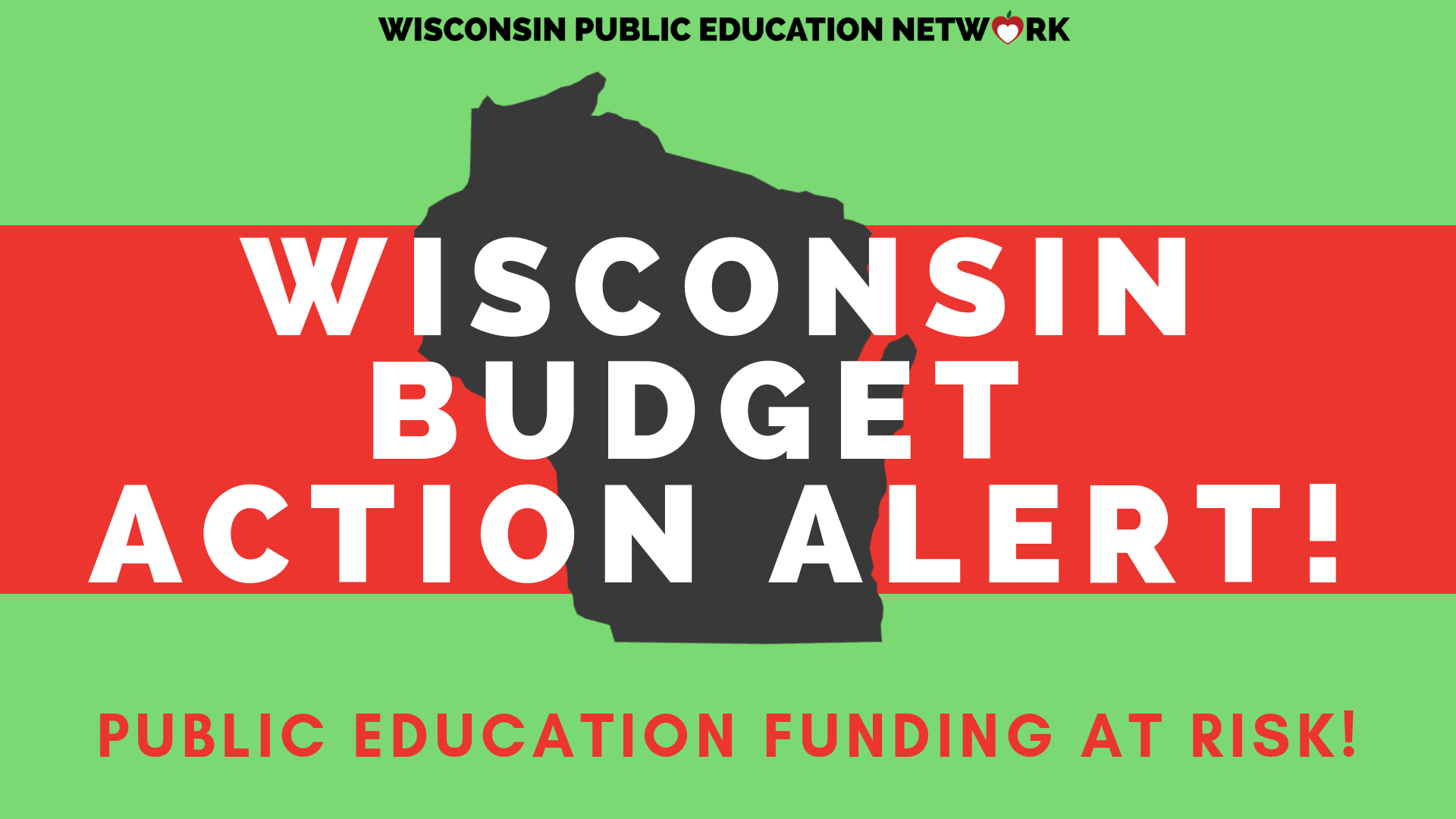“Pitiful.” That’s the word a national funding expert from EdBuild used to describe Wisconsin’s funding system compared to other states. “Pitiful.”
At a public hearing before the Blue Ribbon Commission on School Funding, national experts from both EdBuild and the Education Commission of the States iterated the many ways Wisconsin is worst or near worst in the nation in how it funds its public schools, particularly in the areas of bilingual and special education. Meanwhile, school leader after school leader at every hearing of the Commission detailed the ways that this insufficient funding hurts our children and their public schools, which strive to ensure excellence in these essential, mandated programs that make our public schools thrive and bring our children together and integrate healthy communities.
See their testimony here. And here. And here. And here.
Wisconsin public schools are in a funding crisis, and there is are proposals on the table – from both in the 2019-2021 State Budget and the bipartisan Blue Ribbon Commission on School Funding – that would restore the state’s reimbursement rate for special education to 60%.
Click here to see an interactive map of what a 60% Special Education Reimbursement would look like for your district.
With special education funding frozen for a decade, districts around the state are forced to use money from their general funds to cover the costs of special education services that are no longer covered by state aid. As costs and needs continue to rise, the state’s contribution has become more and more meager, and local taxpayers continue to pick up the tab as record numbers of referenda pass just to keep school doors open.
Wisconsin once reimbursed public schools 70% of their special education costs. In 2000 (Vincent v. Voight), the state Supreme Court warned that failure to meet the needs of kids with disabilities, English language learners and students in poverty could challenge the constitutionality of the state funding system. Since then, we’ve only widened the gaps. While the state has continually decreased its reimbursement rate of special education costs to public schools, it has increased the special education reimbursement rate for children attending private schools on a so-called “special needs voucher” to 90%. And as lawmakers traveled the state to learn more about what challenges face our public schools they heard powerful testimony on a resounding theme: Wisconsin’s school funding system, and especially the way it funds special education services, is not adequate. It’s not sufficient. It’s not predictable. It’s not fair.
The nonpartisan Wisconsin Policy Forum just last month released a sobering analysis of this crisis – SPECIAL EDUCATION FUNDING IN WISCONSIN – that confirms the urgency of the situation.

At a time when Wisconsin’s special education funding is at a pitifully low 24.5% reimbursement, school districts around the state have been passing resolutions calling for a 90% reimbursement of actual costs from the state. The Wisconsin Association of School Boards passed a resolution calling for a 60% reimbursement. The Blue Ribbon Commission on School Funding, a bipartisan panel of legislators and private citizens with expertise in education, called for a minimum 30% reimbursement in the first year of the biennial budget and 60% in the second year, as did Governor Evers in his 2019-2021 budget proposal.
The need couldn’t be more obvious. The solution couldn’t be more clear. What are we waiting for, Wisconsin?
The time to call on lawmakers to fix this for good is now.
We can’t let partisan politics and budget bickering get in the way of common-sense policy that responds directly and immediately to the most pressing needs of our kids.
Our children are counting on us to do the right thing.
And the right thing to do is meet their priority needs first.
Partially restoring the state’s commitment to 60% reimbursement of special education costs would be a huge first step toward funding fairness and creating equitable learning opportunities for all of our students in Wisconsin public schools.
Anything less is yet another investment in widening our gaps.
Click here to see the map showing what a 90% reimbursement would mean for your district.


